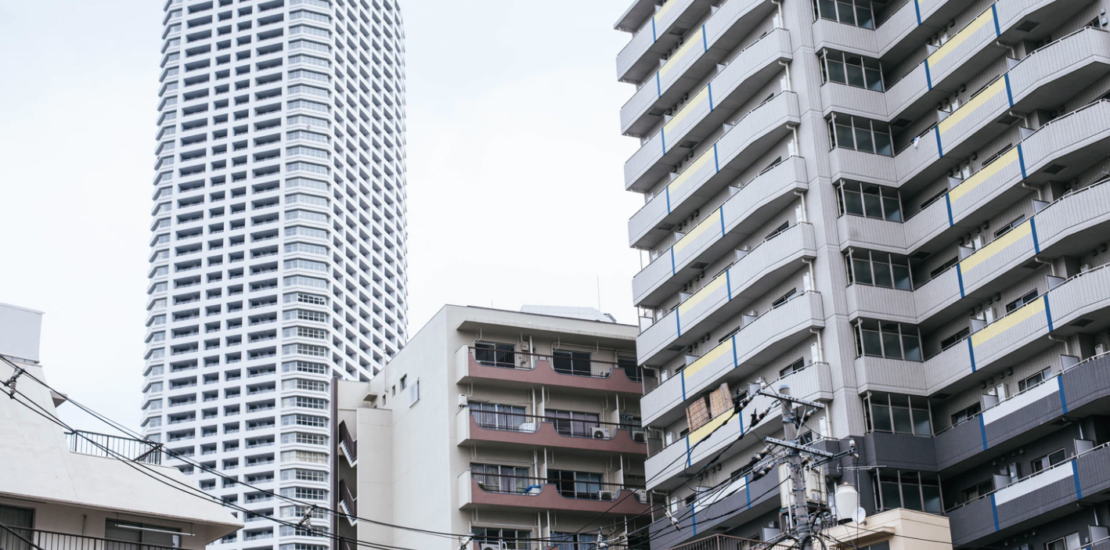
What’s the difference between a regular apartment and a shared apartment?
Are you looking at housing options during your stay in Japan? Perhaps the top two most popular modes of accommodation in Tokyo, specifically, are apartments and sharehouses. With their pros and cons, you’re left with a big decision to make. Let us help you out along the way.
Don’t let Tokyo’s high cost of living convince you that you’re left with no options but to live two hours away to live comfortably within your means. With the right know-how, you can sign a contract to a place that you can call your home away from home.
What is a sharehouse?
A regular apartment is self-explanatory enough as it is a residence leased to a tenant under a contract with the landlord. A sharehouse, however, might be a new concept for some. It is a company-run accommodation offered to those on a short-term (about three months) or long-term basis where you get a private room and share the common spaces.
Perks of staying at a regular apartment
Before we jump into sharehouses in greater detail, let us cover the typical apartment perks. You get increased safety and privacy because the whole place is yours. It is also somewhat quieter because you don’t share any of the rooms with others. However, take note that Japanese apartments are known to have thin walls, so if you’re located beside and under other tenants, you might hear footsteps and muffled talking from your neighbors. With your own apartment, you also lessen the risk of clashing with other tenants (more on this later).

Benefits of living in a sharehouse
Perhaps the biggest advantage of living in a sharehouse is the savings. There are higher upfront fees you need to provide when signing a lease for an apartment. However, for sharehouses, you often only have to pay a month’s rent, which is sometimes considered a refundable deposit, and you’re good to go. Once you’ve paid the amount, you can already inform the office of your move-in date, and it can be as soon within a week.
Another perk to sharehouse living is that you don’t have to worry about utilities. These are often included in the rent and don’t fluctuate much even if you leave the air-conditioning on the whole day during the scorching summer days. You also save time paying utility bills and don’t have to worry about missing the deadline because all of that is covered in your monthly rent.
Hate furniture shopping? You also don’t have this in your to-do list before moving in because most sharehouses are fully furnished with the necessities such as a bed, desk, closet, even a mini-fridge in each room for some of the more expensive listings. You even have the essentials in the kitchen such as utensils, pots and pans, microwave, toaster, or rice cooker, and a designated laundry room. All you really need to get settled in are your toiletries, food, luggage, personal belongings, and yourself.

Living in a sharehouse means roommates. You can make new friends from all over the world, build new relationships, learn about new cultures and enjoy Tokyo life with others your age. There’s also the convenience of not having to stress too much about cleaning the shared areas because the company has staff who will do weekly cleaning, refilling dishwashing liquid and tissue paper, etc. These aspects make sharehouse an even more convenient option. And when it’s time to move on or transfer, terminating your contract is also so much easier. You can give the company a month’s notice, and they will reimburse the security deposit.
A typical sharehouse rent for a room with enough space for a bed, small desk, and closet is about ¥45,000 per month. The price can go up to ¥100,000 for sharehouses located in key areas in Tokyo, such as near business districts or universities. The more amenities in a room or shared spaces, the higher the rent.
Downsides of sharehouse living
With all of those advantages mentioned above, it’s easy to get pulled into the false glamour of sharehouses. The main thing you should not forget is that you will be living with other people. Some sharehouses are a couple of stories high, with ten or more rooms on each floor. You will be sharing one or two bathrooms, the shower, and kitchen areas with the other tenants.
You also need to understand that what is standing between you and strangers is a door. Sometimes that door is securely locked with a decent doorknob; sometimes, you only get a sliding door that can be broken into. If there is someone who is unhygienic, prepare for infestation. You might also encounter your food items missing from the fridge or pantry. Lastly, when a tenant brings their special someone over, well, the walls are pretty thin, and you can hear quite a lot.
Speaking of thin walls, if you like singing in the shower or need absolute quiet to study, you can’t really guarantee how your housemates will react to your preferences. You also can’t choose who you end up with, hence clashing with others is possible. It is advisable to go the friendly route and avoid making enemies because of the fact that you sleep in close proximity to them.

Other forms of shared living
If you stand on the fence between a regular apartment and a sharehouse, whether it’s the lack of budget and doubts about sharing your personal space with so many others, there are a few other options you can consider.
One is a homestay, where you contact a Japanese family that has opened their door to accommodating a foreigner. Decreasing the number of tenants in a house can bring you close to a regular apartment setup, albeit you need to take extra caution of the family’s background as there have been nightmarish stories regarding homestays in Japan.
Another option is crashing with a friend. I know of two close friends who decided to live together. One is a chef, and the other is staying in a company apartment. After getting approval from his boss, the guy offered to let his chef friend stay at his place for free (since he didn’t pay for rent either). In return, he and his boss get delicious homecooked meals. This might be a rare instance for a win-win scenario in accommodations, but they do happen!

Which accommodation is for you
When choosing between a sharehouse or a regular apartment, there are several things to consider. One crucial aspect is distance. Imagine having to avoid rush hour at the Yamanote Line because your sharehouse is within walking distance to your workplace in Shibuya. Don’t forget the savings, too. However, if you work from home, then your priorities are different, and you require space and a good work environment which a sharehouse might not be able to provide.
Having lived in both sharehouses and rented apartments, I can say that the decision will significantly rely on your preferences and needs. Do you prioritize your personal space and quiet? Are you someone who gets annoyed when the kitchen has oil stains and the bathroom floor filled with hair strands? Or perhaps you’re out most of the time for work and simply need an accessible place to crash at night? These aspects need to be taken into consideration when choosing between a rented apartment and a sharehouse.
Whether you go the sharehouse or own apartment route, remember to weigh the pros and cons with your requirements, as these will make your decision more worthwhile.
Related Articles
2024 Tokyo Area Rent Guide: A Complete Resource for Foreigners
Warning: Undefined array key "sfsi_threadsIcon_order" in /home/veremosglobal/tokyoroomfinder.com/public_html/blog/wp-content/plugins/ultimate-social-media-icons/libs/controllers/sfsi_frontpopUp.php on line 165
Warning: Undefined array key "sfsi_blueskyIcon_order" in /home/veremosglobal/tokyoroomfinder.com/public_html/blog/wp-content/plugins/ultimate-social-media-icons/libs/controllers/sfsi_frontpopUp.php on line 170
Warning: Undefined array key "sfsi_bluesky_display" in /home/veremosglobal/tokyoroomfinder.com/public_html/blog/wp-content/plugins/ultimate-social-media-icons/libs/controllers/sfsi_frontpopUp.php on line 266



